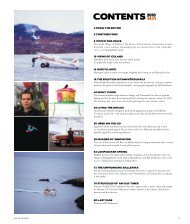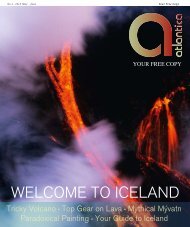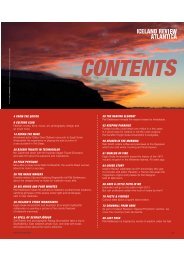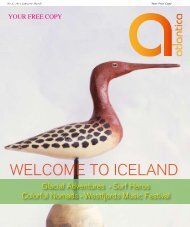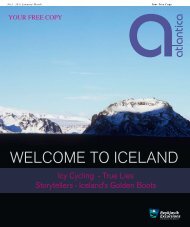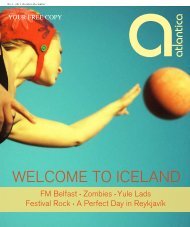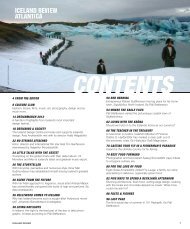Atlantica No. 4, 2010, July-August - Iceland Review
Atlantica No. 4, 2010, July-August - Iceland Review
Atlantica No. 4, 2010, July-August - Iceland Review
- No tags were found...
You also want an ePaper? Increase the reach of your titles
YUMPU automatically turns print PDFs into web optimized ePapers that Google loves.
a Countryside CultureThe <strong>Iceland</strong>ic Phallological Museum in Húsavík.Also located in Húsavík, the Phallological Museum is one of the trulyunique collections on the island. It is possibly the only museum inthe world dedicated to the collection of phallic symbols of the world.Phallology is one of the great ancient sciences which received little attentionin <strong>Iceland</strong> until the efforts of its curator, Sigurdur Hjartarsson, a retiredcollege teacher of history.The Museum contains over one hundred penises and penile parts fromalmost every mammal to be found in <strong>Iceland</strong>. Whales are the best representedwith over thirty specimens. Other specimens of interest includethe rogue polar bear and several species of seal and walrus. The museumwas originally located in the heart of Reykjavík and opened in 1997 with62 specimens. Upon retiring in 2004 to Húsavík, the whale capital of<strong>Iceland</strong>, Hjartarsson took the whole kit and caboodle north with him.Public reaction to his efforts has been positive, with more than 100 articlesfrom 26 different countries written about the museum. As of summer2009, more than 11,000 people had visited this extraordinary collection.Opening hours: 20 May – 10 September 12 p.m. – 6 p.m. dailyThe Sea Monster Museum in BíldudalurOpened in the summer of 2009, the Sea Monster Museumin Bíldudalur traces the countless stories of sea monstersightings and encounters in the Arnarfjördur fjord and theWest Fjords. Multimedia screens and quirky, dark lit roomscreate a unique atmosphere where the history of sea monstersin the fjord is conveyed in an eerie manner. Museumcreator, film maker Kári Schram, has made a documentaryabout sea monsters in which he interviewed people whohad seen the creatures. There are stories of monsters tryingto enter and break down farms, chasing people withno good intention, and of monsters attacking trawlers andhurting sailors. Schram suspects these creatures of thedeep sea come into the fjord to spawn in September whenthe sightings occur most often. “There are kettles in thefjord which are more than 100 meters deep,” he says. “Whoknows what is hiding in these crevices and caves?”The most reported sightings are of ‘mermen’ and fjörulalli,or shore crawler, which leaves huge hoof-like tracks. <strong>No</strong>specimen has ever been captured alive or dead or filmedwith any accuracy but Schram does not let that waterdown his belief. “Scientists are constantly discovering newlife forms on earth. The shallow seas and the deep seasof the north are among those places on the planet whichwe know least about. There could well exist shy creatureswhich lurk in the depths most of the time and have theurge to come ashore once in awhile.” a48 atlantica



